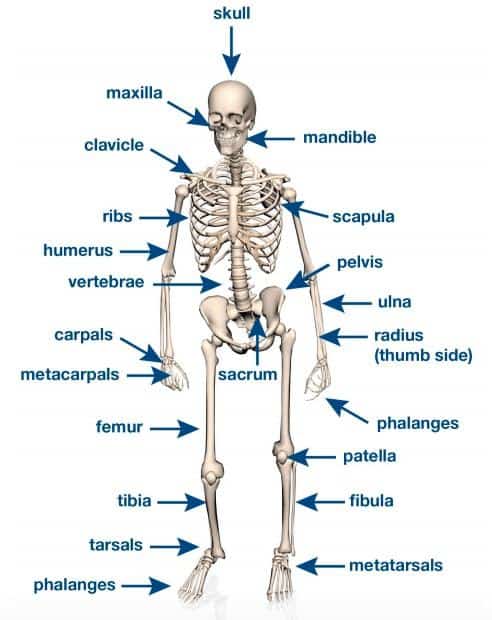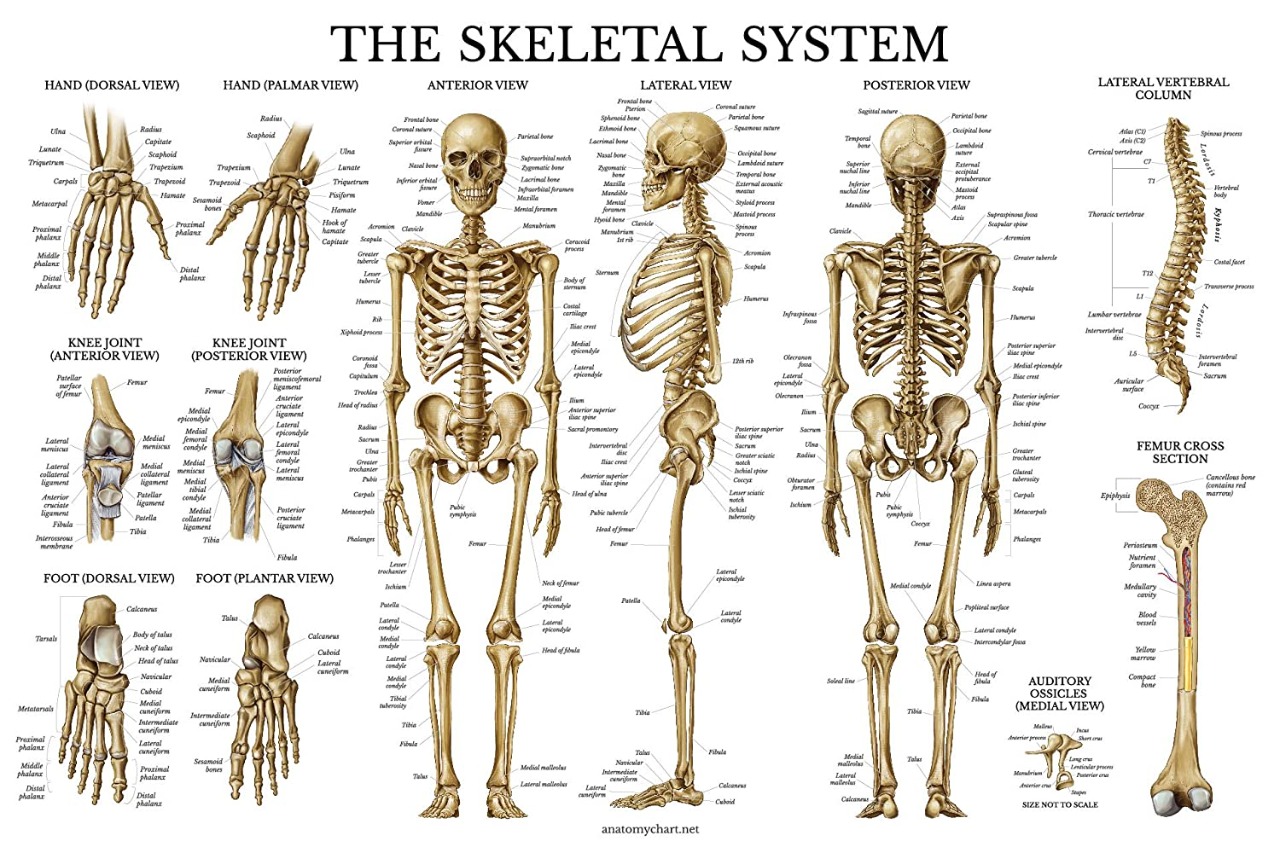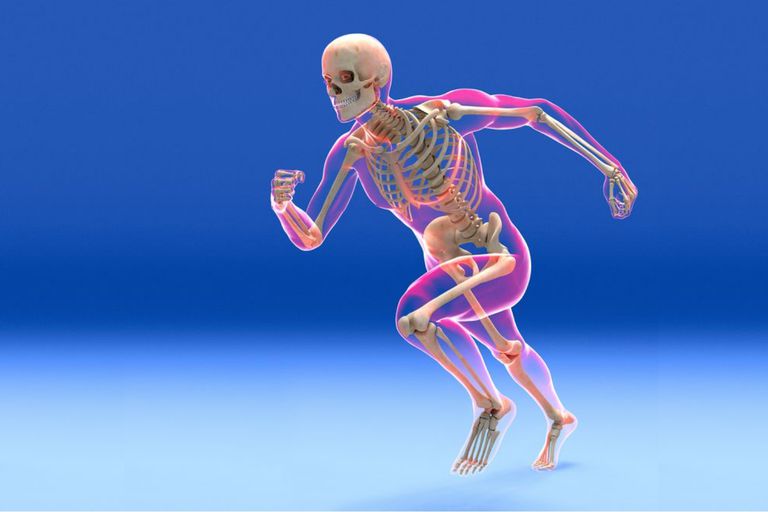The skeletal system is one of the fascinating parts of the human body. Not only do the bones in the human body provide structure, but they also play an important role in protecting the body. There are different types of bones, and each of them has a specific function to serve.
If you don’t know how many bones are in the human body, you live under the rocks. There are 206 bones of the body, and each of them has a specific function to serve. The network of bones and teeth connect each other to form the body’s skeletal structure.
Table of Contents
Fun facts about bones in the human body
Here are some of the fun facts that you need to know about bones in the human body:
The skeletal system is more than bones
One of the main misconceptions people have about the skeletal system is that it is made only of bones in the human body. However, the skeletal system consists of teeth and bones. Nonetheless, there are other parts that contribute to the formation of the skeletal system.

Cartilage and ligaments are the most crucial element of the skeletal system. Ligaments refer to the flexible band of dense and fibrous connective tissues. These are eventually important for the functioning of joints. Cartilage contributes to providing a structure to the nose and larynx.
There are more bones in babies than adults
There are 206 bones of the body for adults, and however, infants have more than that. The skeleton of an infant is a mixture of cartilage and ligaments, which is why they have around 300 bones. During the process of ossification, the cartilage strengthens. Eventually, the extra bones that an infant’s body has eventually fused to become large bones.
Hands and feet have maximum bones in the human body
As suggested earlier, there are different types of bones, each of which has a specific function to serve. There are numerous bones in different sizes and shapes. However, not all of them are equally distributed in our bodies. Certain areas in our body may have fewer bones than others.
However, the hands and feet have the maximum bones in the human body. While the hands have around 27 bones, the foot has around 26 bones. Therefore, overall the hand and feet contain around 106 bones. As a result, our hands and feet comprise more than half the body’s bones.
The skeletal structure helps to protect the most vital organs
Our skeletal structure plays an important role in protecting our vital organs, such as the brain. Bone is one of the main components of our skull. Our skull is responsible for protecting our brain.

Similarly, our heart and lungs are found in the thoracic cavity, and the vertebral column is responsible for protecting the spinal cord. Furthermore, a vertebral column only helps to provide structure to our body. On the other hand, our heart is protected by the rib cage.
Humans have been dealing with bone tumors for a long time
Bone tumors can be a deadly disease. As soon as you notice signs of tumors in bones in the human body, you need to contact a healthcare professional. Large active living cells make up the bones.
The cells in bones are very much prone to benign tumors. Furthermore, they are also at risk of developing cancer. Therefore, bone tumors aren’t a new thing, and it has been there for a long time.
Studies show that bone tumors date back to around 120,000 to 130,000 years.
Bones are of five types
One of the most surprising facts about bones in the human body is that they are of five types. Human bones are usually categorized based on their function and shape, and the femur is the longest bone in the body.
The frontal bone of the body is known as the flat bone. Furthermore, the patella is sometimes referred to as the kneecap. The knee cap further is a sesamoid bone. The tarsals are present in the feet, whereas carpals are present in the hands. These types of bones are prominently referred to as short bones.
The Long Bones in the human body are divided into three main parts
The human bone is a very complicated structure. Therefore, all the long bones in the human body are divided into different sections. The exterior part has a compact bone layering. On the other hand, the surrounding bone has a spongy appearance. The interiors of the bones in the human body have a filling of yellow bone marrow.
Animals that have internal bony skeletons are in the minority
One of the most surprising facts about the skeletal structure is that the animals with internal bony skeletons are in the minority. The human skeleton can be found under multiple layers of muscles and skin. While this is valid for many vertebrates, this may not be the case with all of them.

The majority of species in the world do not have an external or internal skeleton that is made up of bones. Some invertebrates have an exoskeleton, and the exoskeleton is often made using chitin, and Chitin is often found in worms and jellyfish.
Many bones are capable of producing red blood cells
This may come as a surprise to many, but bones can produce red blood cells. Redbone marrow refers to a soft tissue that is located within spongy tissues. These are, however, found only in some bones.
Redbone marrow can be found in adults. Some of the common places where red bone marrow is found include the sternum, pelvis, ribs, cranium, and vertebrae, all of which are responsible for producing blood cells.
Many joints have minimal movement
Many joints in the human body have little to no movement. The joints are usually identified depending on their movement, and they may either be termed immovable joints or movable joints.
Joints such as the fibula and tibia have very little movement. The joints that promote movement in the body are available in the lower and upper limbs.
Final Thoughts
The bones in the human body are extremely complex, and they have a specific movement and can support a wide range of functionalities. The combination of muscles, tissues, and bones plays a vital role in promoting movement. It is our brain that has complete control over how the bodies function.





